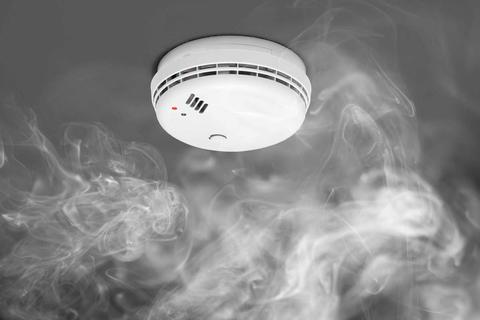Summary
Residential fire losses dominate the total fire losses in the U.S. According to a National Fire Protection Association (NFPA) report, residential fires caused 79% of fire deaths and 77% of fire injuries in 2023. Additionally, these fire losses have stayed about the same for over a decade. This project focuses on reducing residential fire losses in four ways: 1) improving fire safety products, 2) understanding how smoke moves in fires, 3) sharing knowledge to improve codes and standards, and 4) promoting public awareness of fire safety.
Description

Objective
To enable a reduction in residential fire deaths and injuries by advancing household detection systems, conducting targeted research on smoke measurements and model validation, and assessing the impacts of new technologies on residential life safety. This project develops datasets and modeling tools to evaluate increases or decreases in building fire hazards to inform more effective codes and standards and promote public awareness.
Technical Idea
The new technical idea is to approach residential fire safety through interrelated research to bring innovative products to market, enable more effective codes and standards changes, and promote public awareness of residential fire safety. Most fire deaths and injuries occur in household fires, where the use of residential fire safety technologies varies. Developing and evaluating technologies to reduce residential fire losses requires new measurement science capabilities to enable advanced technologies. Codes and standards can be very slow to change, and even slower to adopt, and increasingly more research and data is required to justify changes. Additionally, public messaging derived from un-biased research is crucial to implementing and maintaining fire safety innovations.
This project will reduce residential fire loss by assessing technologies for more effective smoke alarms, developing capabilities for advanced measurements and models for smoke and soot dynamics, and evaluating the impact of changes in fire technology or fire hazards on residential life safety, which can be used to guide household fire codes.
Research Plan
This project is composed of three interrelated research subtopics whose outputs are used to evaluate and improve household fire safety strategies.
Subtopic 1 is focused on measurement science to advance smoke and fire detection systems to be able to both effectively respond to emerging fire hazards (i.e. lithium ion-powered devices in homes) as well as reduce the occurrence of false alarms (i.e. due to cooking), referred to as nuisance alarms. Laboratory experiments are conducted at a variety of scales to measure smoke alarm performance and aerosol characteristics of fire and nuisance sources, including particle size distributions and concentrations, light scattering properties, and pertinent gas concentrations. We continue to support standards development for smoke alarm performance test methods and dissemination of household fire safety recommendations.
Subtopic 2 is focused on advancing smoke measurements and model validation for NIST’s Fire Dynamics Simulator (FDS) and Smokeview, especially measurements and predictions of soot deposition. We conduct experimental and computational studies of smoke dynamics and soot deposition to improve fire modeling predictions, such as smoke visibility, smoke toxicity, smoke alarm activation, and burn patterns on surfaces.
Subtopic 3 is focused on developing and implementing a probabilistic methodology for estimating building fire hazard and especially for evaluating the impact of new technologies on residential life safety. New technologies include those that could provide improved fire protection (i.e. furniture fire barriers) but also new technologies that could increase building fire hazard (i.e. lithium ion-powered devices in homes). We compute 1000s of simulations using the fire model CFAST to assesses the impacts of a product change given different household fire safety infrastructure (i.e. detection and suppression systems) and occupant characteristics.
Major Accomplishments
- NIST smoke alarm performance studies have found that new smoke alarms that pass the new UL 217 standard still generate nuisance alarms during cooking at comparable rates to older smoke alarms.
- A novel photoacoustic method for measuring deposited soot during fire investigations has been demonstrated in a laboratory setting.
- A probabilistic methodology was developed and is used to assess the overall impacts of new fire safety improvements or hazards, considering statistical distributions of housing characteristics, egress response, and fire scenarios.

